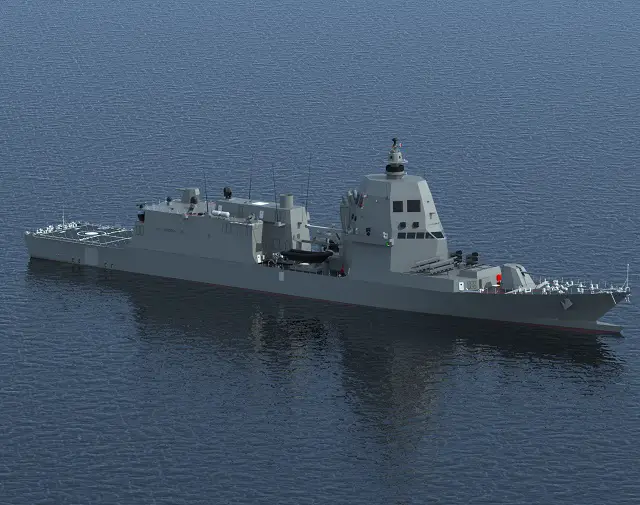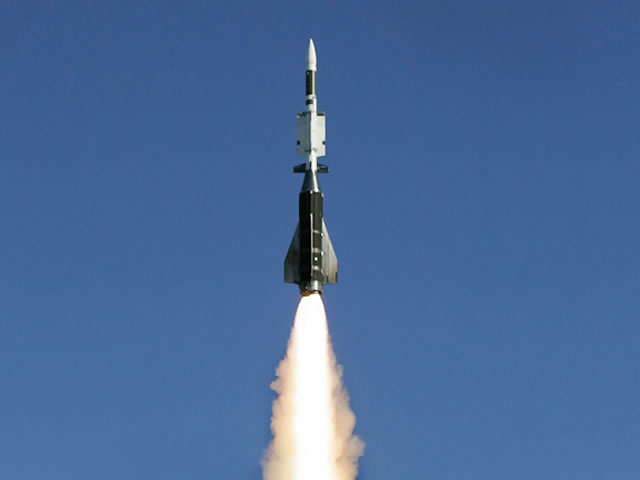Breaking news
Italy Confirms MBDA Aster 30 Bock 1NT ABM Missile Program - Navy OPVs Likely to Get Capability.
| 2017
|
|
|||
|
MBDA video on Aster Block 1 NT missile: the advantages of the new Ka-band seeker
|
|||
|
|
|||
|
Speaking about the event, MBDA CEO Antoine Bouvier, stated: "The Italian notification strengthens the Aster programme well beyond the financial and technological contribution. Once again, cooperation in Europe adds up to far more than the sum of its parts. After the current Aster 30 Block 1, which gave Europe its first defence capability against theatre ballistic missiles, the Aster 30 Block 1 NT will allow to extend this capability to more complex threats and will also deal with the emerging threat of Anti-Ship Ballistic Missiles (ASBM)."
|
|||
|
|
|||
|
MBDA video on Aster missile interception scenario
|
|||
|
|
|||
|
About the Aster system
The Aster 30 Block 1 NT missile evolution consists in a new seeker operating in Ka band, replacing the current Ku band seeker, as well as a new improved weapon controller. This change delivers a significant performance enhancement. The new missile will be capable of intercepting threats of the entry of the MRBM (Medium Range Ballistic Missiles) domain whereas the current Aster 30 Block 1 deals with SRBM (Short Range Ballistic Missiles) of up to 600 km range and it will also be capable of dealing with missiles with separable warheads. Launched in 1988 by France and Italy, the Aster family (also known as FSAF – Future Surface-to-Air Family) exists as a ground based air and missile defence system (SAMP/T) in service with the Italian Army and the French Air Force. It is also deployed in its naval versions for the self defence of the French and Italian Navies aircraft carriers and provides the self, local and fleet area defence capability on British, French and Italian frigates and destroyers. The UK, which deploys Aster missiles on its Type 45 destroyers, declared during the Franco-British summit held in Amiens in March 2016, that it is considering the new Block 1 NT version for this class of ships. Aster systems play an active role in NATO’s ALTBMD (Active Layered Theatre Ballistic Missile Defence) in defending allied forces against ballistic threats and, as such, represent a major Franco-Italian contribution to this programme. Aster systems deployed on “Orizzonte” Italian frigates took part in the No-Fly Zone mission over Libya decided by the United Nations in March 2011. SAMP/T systems operated by the Italian Army are today deployed in Turkey as part of NATO assistance to defend against a possible missile threat coming from the Syrian territory. |
|||
|
|
|||
 PPA CGI. Image: Italian Navy PPA CGI. Image: Italian Navy |
|||
|
|
|||
|
About PPA
The PPAs will be built at Fincantieri’s Integrated Shipyard of Riva Trigoso and Muggiano, with delivery of the first vessel of the class set for 2021. The multipurpose offshore patrol ship is a highly flexible ship with capacity to serve multiple functions ranging from patrol with sea rescue capacity to Civil Protection operations, and in its most highly equipped version, first line fighting vessel. There will be indeed different configurations of combat system: a “soft” one for the patrol task integrated for self-defence ability, and a “full” one, equipped for a complete defence ability. The vessel is also capable of operating high-speed vessels such as RIB (Rigid Hull Inflatable Boat) up to 11 meters long through lateral cranes or a hauling ramp located at the far stern. • 129 meters long • Speed of over 31 knots • 171 persons of the crew • Equipped with a combined diesel and gas turbine plant (CODAG) • Capacity to supply drinking water to land • Capacity to provide electricity to land with 2000 kw of power • Possibility of embarking modular residential and healthcare zones • 2 modular zones at the stern and at the center of the ship that allow the embarking of various types of containerized operating/logistic/healthcare modules (in particular, the stern area may receive and handle within a covered area up to 5 modules in ISO 20” containers, while the central zone may receive and handle up to 8 ISO 20” containers) The PPAs will be built at the Integrated Shipyard of Riva Trigoso and Muggiano, with delivery expected, for the first vessel of the class, in 2021, while the following deliveries of the vessels will take place in 2022, 2023, 2024 (two units), and 2025. |
|||






























